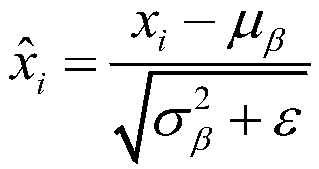Character recognition method based on an attention mechanism and linkage time classification loss
A text recognition and attention technology, applied in the field of optical character recognition, can solve the problems of single character recognition out of context, low versatility, and time-consuming production.
- Summary
- Abstract
- Description
- Claims
- Application Information
AI Technical Summary
Problems solved by technology
Method used
Image
Examples
Embodiment Construction
[0080] The present invention will be further described below in conjunction with accompanying drawing.
[0081] like figure 1 As shown, the text recognition method based on the attention mechanism and the connection time classification loss of the present invention, the specific implementation steps are as follows:
[0082] S1: Collect data sets. Collect texts in various natural scenes and combine these texts. Divide the data set into three parts: training data set, verification data set, and test data set. In order to ensure that the training set, verification set and test set have the same sample distribution, the original data set is first scrambled, and then split proportionally, with a split ratio of 7:2:1. The training data set is used to optimize the model parameters, the validation data set is used for model selection, and the test data set is used for the final evaluation of the model. Denote the selected data set as T={(x 1 ,y 1 ),(x 2 ,y 2 ),…,(x N ,y N )}...
PUM
 Login to View More
Login to View More Abstract
Description
Claims
Application Information
 Login to View More
Login to View More - R&D
- Intellectual Property
- Life Sciences
- Materials
- Tech Scout
- Unparalleled Data Quality
- Higher Quality Content
- 60% Fewer Hallucinations
Browse by: Latest US Patents, China's latest patents, Technical Efficacy Thesaurus, Application Domain, Technology Topic, Popular Technical Reports.
© 2025 PatSnap. All rights reserved.Legal|Privacy policy|Modern Slavery Act Transparency Statement|Sitemap|About US| Contact US: help@patsnap.com



